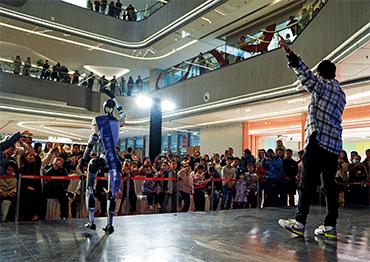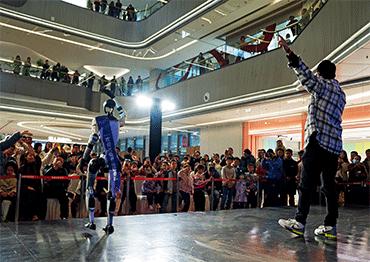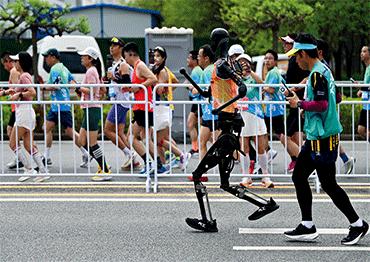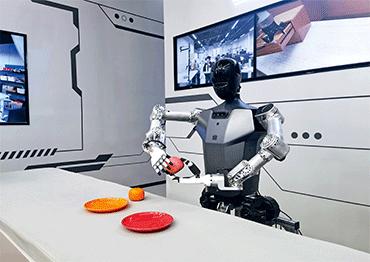In April 2025, Beijing hosted the world’s first humanoid robot half-marathon. More than 20 Chinese robotics firms joined over 20,000 human runners on the 21-kilometer course. For many, the event was both a spectacle and a stress test for an industry claiming to be ready for the real world.
Only six robot teams finished the course, reflecting a 30 percent success rate. Even the winner, the “Tiangong Ultra,” stumbled multiple times. It averaged 7 minutes and 37 seconds per kilometer, roughly the pace of a mid-level amateur human runner. Most other robots either overheated, lost balance or broke down entirely.
“People tend to focus on the level of technology but rarely pay attention to the maturity of the product, and that’s the real key to successful commercialization,” said Liu Fuqiang, team leader at BXI Robotics, which finished fifth.
Despite the robots’ underwhelming performance, both developers and organizers saw the event as a success. Guo Yijie, lead engineer of the Tiangong Ultra, called the race a breakthrough: “We’ve reached human-level endurance. That’s historic for humanoid robotics.”
For many, the event served as a fitting metaphor: the road to real-world application for humanoid robots is not a sprint, but a marathon: long, uneven and full of setbacks.
Given current technological limits, investors remain divided on the long-term prospects for humanoid robots. On March 29, Zhu Xiaohu, managing partner at GSR Ventures, told domestic media outlet chinaventure.com.cn that commercialization pathways remain unclear, and his firm has been pulling out of multiple projects.
“I asked several CEOs: Who are your potential customers? And frankly, it felt like they were describing imaginary clients rather than real ones,” Zhu said.
His comments were quickly rebutted. The same day, Zhang Ying, founder of Matrix Partners China, one of the country’s leading venture capital firms, said that while bubbles are inevitable in any emerging sector, the humanoid robot space would “definitely produce big companies.”
A report released by Morgan Stanley on February 6, titled “The Humanoid 100: Mapping the Humanoid Robot Value Chain,” identified 100 core companies in the sector, with 32 of them based in the Chinese mainland.
Meanwhile, the Chinese government is doubling down on support for the industry. In its 2025 Government Work Report, released during the annual session of the National People’s Congress (NPC), China announced an “AI+” action plan to promote integration between AI, digital technology and manufacturing. Humanoid robots were listed as part of the new generation of intelligent terminals, alongside AI-powered vehicles and smart devices.
At least 10 provinces and municipalities, including Beijing, Shanghai, Zhejiang, Jiangsu and Guangdong, have outlined strategic development plans for robotics. The tech hub of Shenzhen, for example, announced in February it would launch a 10 billion yuan (US$1.4b) industry fund to support the AI and robotics sectors, with a focus on software, hardware and embodied intelligence.
After launching a humanoid robot innovation center and setting up a 10 billion yuan (US$1.4b) fund for robotics development in 2023, Beijing municipal government made headlines again on June 11, announcing the opening of the world’s first “4S store” dedicated to embodied AI robots.
Modeled after the auto industry’s 4S model which covers sales, service, spare parts and surveys, the store will offer a full suite of services including robot sales, maintenance, parts replacement and technical consultations.
According to a report by market research firm TrendForce released on April 21, six domestic humanoid robot companies, including Unitree, AgiBot, Galbot, Engine AI and Leju Robotics, plan to produce over 1,000 units this year.
Speaking to NewsChina, Liang Liang, deputy director of the Management Committee of the Beijing Economic-Technological Development Area, which helped organize both the humanoid robot marathon and the 4S store, emphasized the importance of public-facing demonstrations.
“Visibility helps the public imagine where this technology might be useful and identify real-world needs,” Liang said. “We hope to drive the industry by focusing on practical applications and letting demand lead development. Finishing the race isn’t the end. The marathon of humanoid robot commercialization has only just begun.”

 Old Version
Old Version


